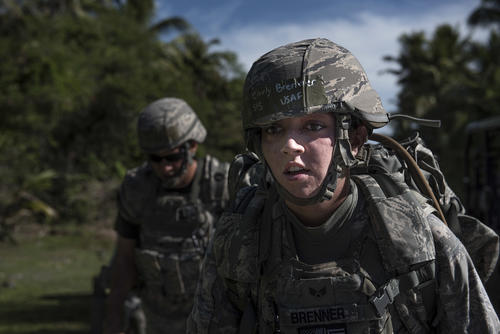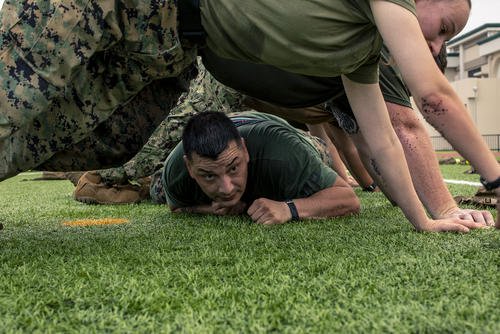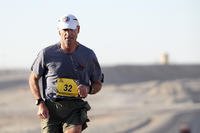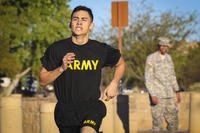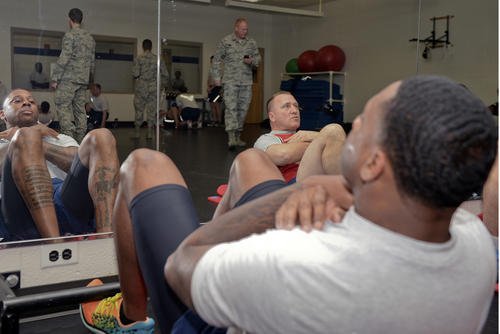Stronger legs are not just for muscle heads in the gym.
As we age, they help boost mobility and stability and independence by protecting joints, reducing falls and improving one’s quality of life. A sturdy lower body can provide myriad health benefits as well, among them regulating blood sugar and fighting diabetes, obesity and cardiovascular disease. Stronger legs allow us to move more, improve our social interactions, and enhance cerebral blood flow and neural development.
In short, you should never skip leg day. Here’s how to make sure that happens as infrequently as possible:
The Basics: Walk and Squat
If you sit for long periods, consider adding “activity snacks.”
Read Next: Navy SEAL Timeline: From Acceptance to Training
At a minimum, walking, sitting down and standing up will help you start building and maintaining leg strength. For extra credit, perform 10 squats every 45 to 60 minutes throughout the day, especially if your workday or leisure time involves sitting for extended periods.
This has been proven to be helpful in regulating blood sugar and is as effective as a 20- to 30-minute walk.
Add Weight to Your Walk and Squats
If you find walking too easy and can manage several sets of 10 to 20 reps of squats in a workout, consider adding a weight vest or carrying dumbbells. Add stairs or hills to your walk to make it harder. You can also replicate this leg workout on stationary bikes or elliptical machines by increasing the resistance or incline, respectively.
Leg Day in the Gym
For those of you who still train in the gym with weights, keep doing it and never stop. Whether you use kettlebells, dumbbells or machines, the added resistance training will continue to improve and maintain your leg strength. The stability and durability of your lower body are the foundation of your longevity, because continued movement leads to a happier, healthier life.
Mix a cardio option with leg strength training in circuits such as the following. Repeat three to four times:
- Walk, jog or bike for 5 minutes.
- Air squats 10 reps
- Lunges 5 reps per leg
- Kettlebell deadlifts 5-10 reps
If you prefer, you can complete all the resistance training together, then combine your cardio sections for 15-20 minutes. Add farmer’s walks and walking on an incline or stairs for your leg-day cardio for that extra pump.
The Science Behind Leg Day and Longevity
Research suggests that maintaining strong legs can support an improved quality of life physically, mentally and emotionally. What is good for the legs is also good for the heart, lungs and brain.
Here is what stronger legs can do:
They Can Improve Cognitive Aging
Lower-body strength is associated with both cognitive aging and overall brain structure. Long-term, lower-body activity designed to enhance leg power may contribute to achieving the broader objective of promoting healthy cognitive aging.
They Can Result in Fewer Falls for the Elderly
Lower body strength should be one of the factors assessed and treated in older adults at risk for falls.
They Improve Quality of Life and Make Us More Mobile
For older adults with and without mobility issues, a decline in muscle mass, strength, power and physical performance increases the fear of falling. That possible outcome keeps us from wanting to be social, leading to a decline in overall quality of life and affecting our mental and physical health.
Calf Muscle Size Can Help the Heart
The calf muscle pump, or CMP, serves as an integral part of the cardiovascular system by facilitating venous return from the legs to the heart.
This type of training can be fun, but it requires a significant buildup to this level of activity in a single gym workout. Be patient and progress logically. Check out more articles in the Military.com Fitness Section on lifting, walking, rucking progressions and longevity that will help you understand the importance of maintaining what you have for the long term.
Want to Learn More About Military Life?
Whether you're thinking of joining the military, looking for fitness and basic training tips, or keeping up with military life and benefits, Military.com has you covered. Subscribe to Military.com to have military news, updates and resources delivered directly to your inbox.









